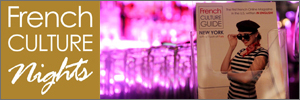For Pierre Gonnord, photography began as necessity. His brother’s death prompted him to abandon his studies in business and turn to photography, an avenue that could connect him to the incredible power of portraiture.
Portraiture, Mr. Gonnord reminds us, contains the story of mankind, and is a “means to fight oblivion.” His exhibit, on display at Hasted Kraeutler from December 8 to February 4, commits to memory the lives and faces of the isolated who live in remote areas of Europe.
One might be inclined to liken Mr. Gonnord’s photographs to Caravaggio or Rembrandt, although he says he feels a greater connection to Spanish painters like Goya and Velasquez. However, ask the artist what other mediums inspire his work most, and he will convince you of his bond with literature, especially American and Russian authors
like Faulkner and Dostoevsky. Master of the Southern Gothic, Faulkner illuminates the marginalized through his stories, enigmatic but shadowed and brooding vignettes of the forgotten. Dostoevsky is the literary Freud; his prose lays bear the subconscious, offering a raw and rich exploration of the human condition.
This is exactly what Pierre Gonnord’s portraits do: they draw people from the shadows, capture and bring clarity to muddled, subliminal expressions muddled within the subconscious, and put the viewer and subject into a conversation. It is this conversation that Gonnord is after: art, he says, is not a universal language. In a city like New York, his photographs may convey sorrow tinged with gratitude for a glimpse of life far removed from the momentum of the urban. But Gonnord also exhibits his work in villages near where he shoots. Viewers there, he says, are moved to tears, for in the faces of these women and men, they see a grandfather who is working all day, or a sister whose hands bear the same marks as the woman in front of them.
Thus, Gonnord is not interested in the character, but the person, and so he denies the viewer (witness) any environmental cognizance. In this way, the photographs are a much more radical approach to personhood, for they compose a narrative that is participatory, but rooted in dignity. Mr. Gonnord spends more time producing images for the villages (where he lives for about three months at a time, spending time with families before asking if he can do portraits) than he does for exhibitions. A project, he says, is never closed. For Mr. Gonnord, a single photograph is but a moment in a perpetual relationship and study of human emotion, curiosity, and experience.
This exhibition is a rare opportunity, for it is the first time that Pierre Gonnord’s work will be exhibited in the United States, which makes it an exciting accomplishment for both the artist and partners Sarah Hasted and Joseph Kraeutler. Ms. Hasted has been haunted by Gonnord’s works for six years, and worked especially hard to ensure that Gonnord’s exhibition in New York would be about a relationship, an opportunity to perpetuate the human story. This story, it must be said, is an incredibly beautiful one. Not only are these photographs powerful, they are also stunning, as gazes ranging in emotion and feeling from pride to seduction to reflection immortalize themselves in one’s mind.
By Elizabeth Walsh
Elizabeth Walsh is an assistant at Gallery 32 Fine Arts, an established New York City gallery owned by Brigitte Saint-Ouen (pictured here with artist Pierre Gonnord). Gallery 32 Fine Arts will be working with French Culture Guide to provide a link for francophone art readers into the New York City fine arts world.








